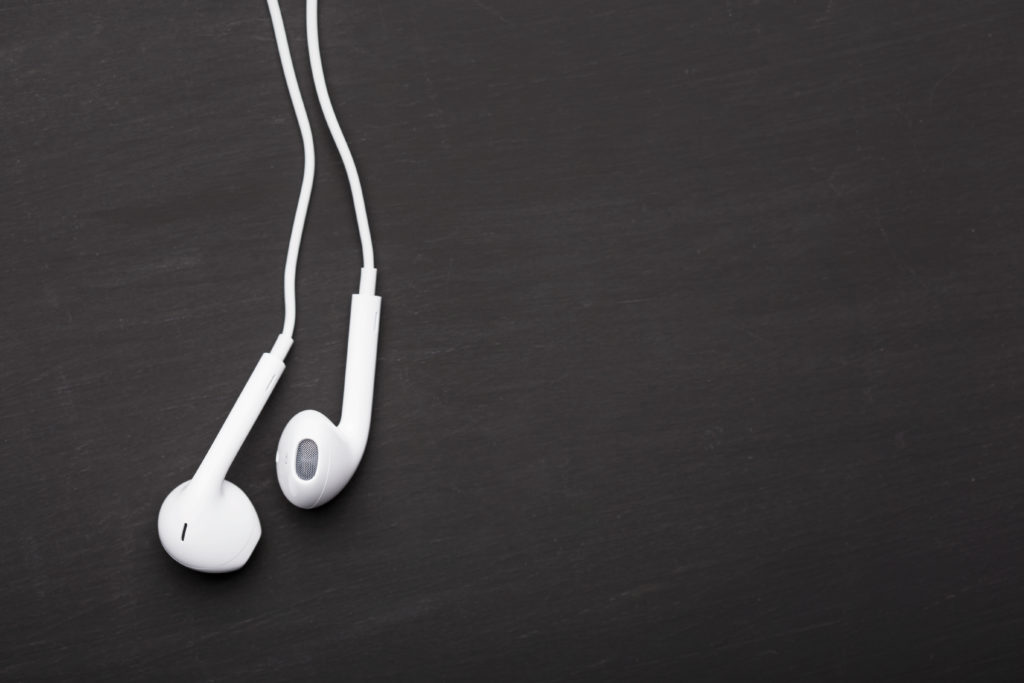It seems like everywhere you look, from the gym to the subway to the street, people are wearing headphones or earbuds.
This convenience comes at a price: The World Health Organization estimates that “1.1 billion young people worldwide are at risk of hearing loss due to unsafe listening practices,” in part from listening to music via headphones or earbuds.
How do headphones cause hearing loss?
Using headphones or earbuds for too long, too loudly, or too often can destroy the parts of the ear vital to healthy hearing. In each ear, there are about 18,000 cilia, which are tiny hair cells that transmit sound. Those microscopic hair cells are an integral part of the process that sends an electrical signal to the brain, which then translates to a recognizable sound.
Using headphones for too long, too loudly, or too often can destroy the parts of the ear vital to healthy hearing.
Loud music and noise damage these hair cells, and that damage eventually causes them to die. Unfortunately the hair cells lack the capability to regenerate. In other words, once they are gone, they are gone for good. This is known as noise-induced hearing loss.
Why are earbuds particularly dangerous to hearing?
They are essentially tiny speakers that funnel music straight into the ear canal. Yet most earbuds are low quality, incapable of blocking out ambient noise. They also tend to transmit bass poorly. Both of these factors lead listeners to turn up the volume even more.
Outside-the-ear headphones are a better option, as unlike earbuds which deliver music directly into the ear, they provide somewhat of a buffering space between the music and the ear canal. However — although headphones are a safer choice than earbuds when it comes to hearing — they are not without their drawbacks.
Like earbuds, most headphones are of low or mediocre quality and do not transmit the bass efficiently. It is worth investing in better quality headphones to improve your listening experience and protect your hearing.
Safer alternatives to prevent hearing loss from headphones
Two different kind of headphones are available that can not only help block out ambient noise, but can protect your hearing as well by allowing you to hear your music at safer levels. One option is noise-canceling headphones, which work by using inverse waves to cancel out the incoming sound. They work best at canceling out low-frequency sounds, like the hum of an engine or the rumble of traffic, but not as well as canceling out higher frequency sounds like the sound of conversation. Another option is noise-isolating headphones; they work a bit differently, by creating a seal around the ear that creates a physical barrier between the ear and the outside noise.
Know the safe listening limits
If you’re not ready to shell out for expensive noise-canceling or noise-isolating headphones, it doesn’t mean you have to stop listening to the music you enjoy. Whether using earbuds or headphones, there are other steps you can take to protect your hearing. For example, to ensure safe listening, experts recommend listening at a maximum of 85 decibels (dB) for no more than eight hours a day.
More: The best smartphone decibel meter apps to measure noise levels
You are most likely not measuring the sound output of your device or phone with a decibel meter, so in lieu of that, the 60/60 rule is a good guideline: Listen to your music for no more than 60 minutes at a time at no more than 60 percent of your device’s maximum volume.
“The maximum output [of many devices] can get up to 115 dB which can cause permanent hearing damage in as little as eight to 15 minutes,” warns Dr. Sreekant Cherukari, an otolaryngologist in Chicago.
The WHO also recommends that people don’t listen to headphones on days they know they’ll be exposed to loud sounds, such as at a concert or outdoor event.
What about children and headphones?
The WHO’s advice says it best:
“You should make sure that your children avoid the use of headphones when possible and use only headphones that provide information about the risks for hearing loss. Parents should also ensure that their children do not increase the volume when they are not supervised. Some devices may be equipped with parental control that allows parents to control the loudness level of the device.”
Reprinted with permission. Copyright Healthy Hearing (www.healthyhearing.com). Read the original article here.
Contributed by Joy Victory, managing editor, Healthy Hearing May 29, 2019



